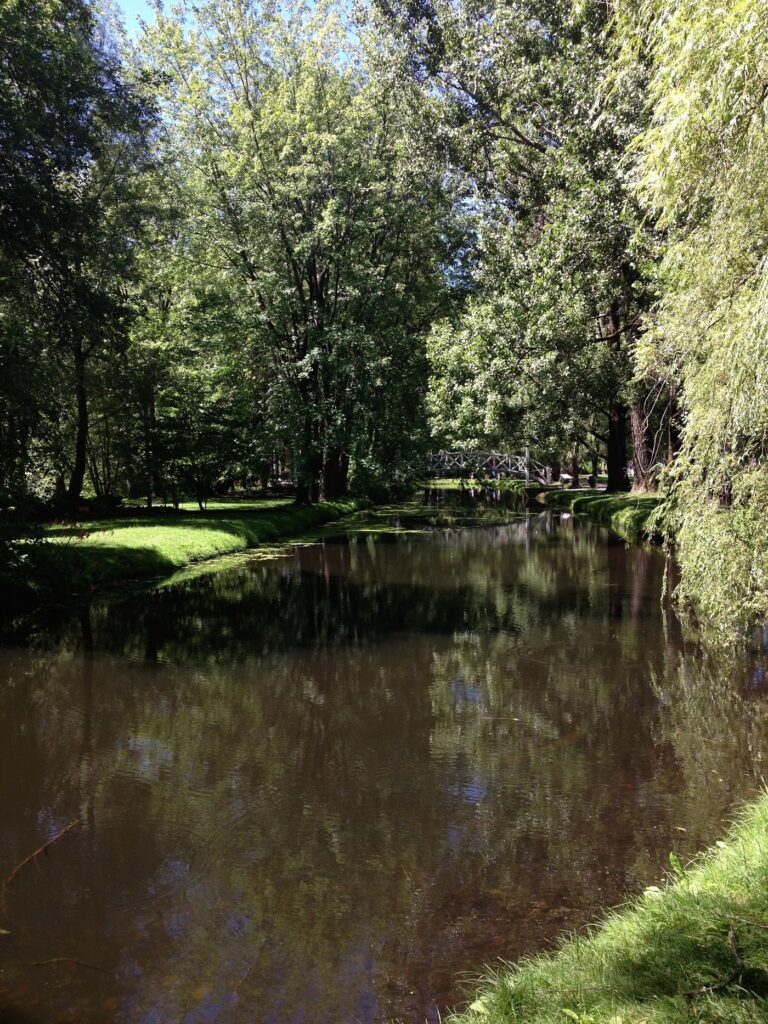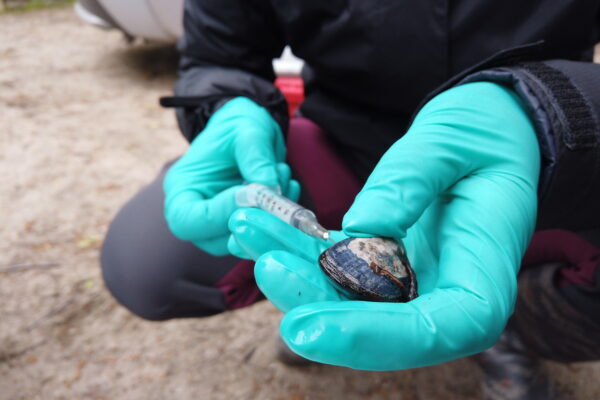- Research
Research report co-led by INRS reveals crucial role of wetlands in preserving municipal water resources.

The summer of 2024 has been marked by heatwaves and record rainfall, and climate projections are showing that Quebec City should expect more of the same in the coming decades. Given that the municipal sector is on the front lines when it comes to dealing with these changes, it needs to be backed by cutting-edge scientific and technical data.
To that end, a research group consisting of the teams of Professor Alain Rousseau at the Institut national de la recherche scientifique (INRS) and Professor Monique Poulin at Université Laval have pooled their expertise to help the City of Quebec protect its water resources by offering a detailed analysis of the hydrological and ecological services its wetlands provide. This project, which was the subject of a report, involved a partnership with Ouranos, the City of Quebec, and the Organisme des bassins versants de la Capitale. This work received financial support from the government of Quebec’s 2013-2020 Action Plan on Climate Change and from Mitacs.
“This is the first time our tools have helped a municipality produce a regional wetland and water conervation plan. Our results are typically used to better understand large hydrological systems, but here they have been used to guide deliberations on wetland conservation on a municipal scale.It’s a major contribution!”
INRS Professor Alain Rousseau, report co-author and expert in hydrological modelling.
“We have also shown that some sectors should go beyond the goal of no net loss, and instead aim to expand wetlands through restoration to counter the effects of climate change on river flows,” explains report co-author Monique Poulin, a professor at Université Laval who specializes in biodiversity conservation and wetland and riparian restoration.
In the current context, the restoration and creation of wetlands and bodies of water is an approach supported by the Programme de restauration et de création de milieux humides et hydriques (program to create and restore wetlands and bodies of water), among others.
To counter the effects of climate change on river flows, other actions need to be promoted as well, such as the use of sound water management practices, the conservation of natural environments, and measures to limit or reduce soil sealing.
The agglomeration of Quebec City has numerous conservation opportunities thanks to more than 44 square kilometres of wetlands (8% of its territory) and a large number of rivers—features that also put it in an enviable position.
Wetlands, from the fundamental to the applied
Wetlands play a special part in the water balance of a watershed, which needs to be quantified so it can be incorporated into our adaptation approaches for climate change. As “buffer zones,” wetlands play a dual role: reducing the risk of floods during high-flow periods and, conversely, reducing the severity of droughts during low-flow periods.

For the past 10 years, professors Rousseau and Poulin have been working together to analyze the ecological services provided by wetlands. The results of their work are of particular interest to municipalities, especially since 2017, when the Government of Quebec introduced the Act respecting the conservation of wetlands and bodies of water.
There is no question that climate change is going to change the water balance of wetlands over the coming years. “Ouranos has identified climate models based on the greenhouse gas growth scenarios we have explored, from the most optimistic to the most pessimistic,” explains Rousseau, who is based at INRS’s Eau Terre Environnement Research Centre. “This allows us to make projections to quantify the role of wetlands and bodies of water within the agglomeration of Quebec City and support the plans for their conservation as part of the regional wetland and water conservation plan.”
The team’s modelling has highlighted two things: there will be a drop in the frequency and amplitude of spring high-flow periods by 2060 and 2100, but there will also be a general increase in the frequency and severity of low-flow periods over the same time frame, leading to greater water supply issues in the summer.
These findings mean that municipalities must take significant action, as researchers have shown that it takes a much larger area of wetlands to cope with drought than with flooding. This is a reminder of the importance of adopting good practices when it comes to using drinking water during the summer. In 2022, the agglomeration of Quebec City passed a by-law governing the use of drinking water from the aqueduct.
The report made numerous recommendations, including estimating the amount of wetland that hypothetically needs to be restored to mitigate the effects of climate change, identifying potential areas to restore, and providing concrete avenues for the development of restoration plans.
Local data with far-reaching effects
According to the scientists, this report could have an impact far beyond the Quebec City region. For instance, although the results it presents are specific to the watersheds serving the agglomeration, the methodological approach developed by the research team can be applied across much of the province. In particular, it can be used to quantify how wetlands help mitigate high-flow periods and provide support during low-flow periods as the climate changes.
In that way, the report can serve as a basis for other municipalities interested in acquiring this knowledge.
“One of the major spin-offs of this report is the approach we have developed to answer the questions raised by the City of Quebec during its conservation planning for wetlands and bodies of water on its territory. Of course, our work can be of use to other municipalities elsewhere in Quebec.”
Alain Rousseau
The researcher points out that most of the land-use and hydrometeorological data required for these models already exist, and their analysis can be used to support other regional conservation plans for wetlands and bodies of water required.



